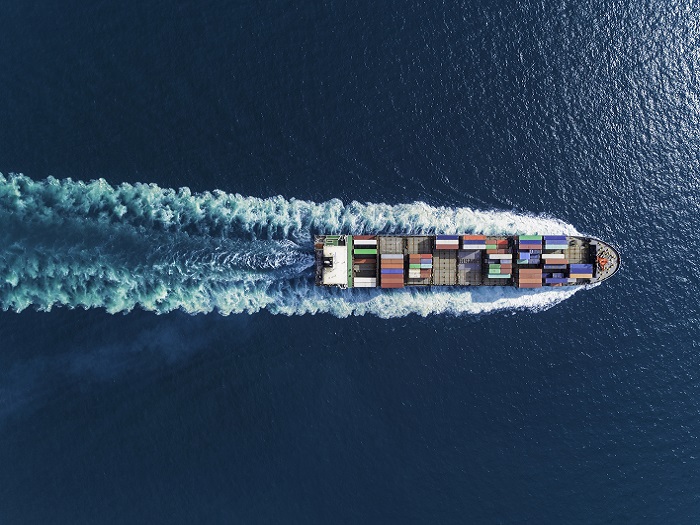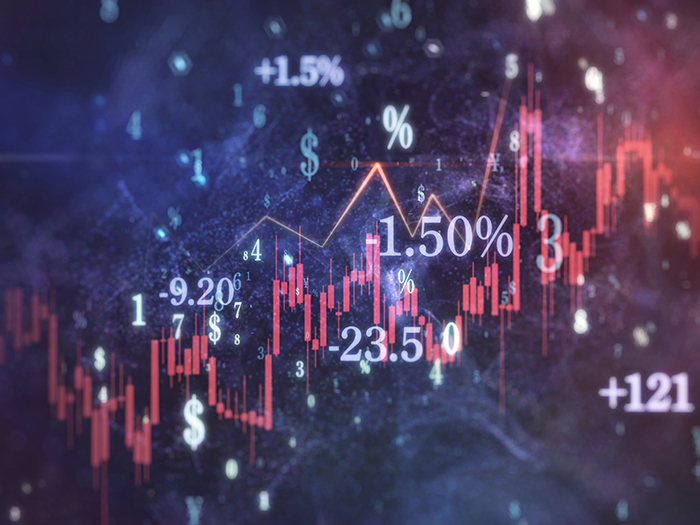Big Data Can Make Cargo Transport Safer and More Efficient. Here’s What It Will Take to Make That Happen

Climate change and cargo theft are two pressing factors that are making the safe transport of food, pharmaceutical products and other sensitive materials more and more challenging.
The hope is that sensors placed on ships, trucks and other forms of transportation can monitor things like temperature and location, reduce losses and assist insurers in pricing transportation risks.
Underwriters are keen to gather and aggregate that data, not only for the practical utility of adjusting claims but also toward greater goals. These include understanding risk concentration; determining premiums, terms and conditions; and even modifying policy language and allocating capacity.
The dream is to have industry data detailed enough for underwriters to use in predictive models. How that dream can come true while still preserving security and confidentiality is a mystery, said Rahul Khanna, global head of marine risk consulting for Allianz Global Corporate & Specialty.
“There are two types of data: proprietary, which is our own or comes from clients, and industry data,” said Khanna. “Proprietary data is deep but not broad, and industry data is broad but not deep”, he explained.
In the proprietary sphere, “sensor data is probably about where needs it to be” in terms of detail and accessibility, Khanna continued.
“There are sectors where we would like more data collected, but that varies with the cost-benefit balance. For many cargo types, there is no real need,” at least for sensors specific to conditions for the shipment. There is always a need for data regarding the location of the vessel or vehicle.
A Fount of Information
Cargo tracking and monitoring are two different things, explained Jarek Klimczak, senior marine risk engineer, AXA XL.
“Tracking is knowing where the vehicle or vessel is, and monitoring concerns the condition of the cargo, which by itself is a huge animal. The aggregation of data is quite a challenge. For monitoring, there are now sensors for temperature, humidity, velocity, shock and even light. For high-value cargoes, those can indicate that the shipping container has been opened.”
For all those capabilities, range remains a limitation. “These are very sophisticated devices, but they are small,” said Klimczak. “Some can last for months on one battery, but they do not have the power to transmit from a ship in the middle of the ocean to a satellite in space.”
Neither is it practical to create a ship-wide network. Anyone who has struggled with a weak Wi-Fi signal on a commercial flight with only a hundred or so passengers can appreciate the technological challenge of collecting and retransmitting multiple sensors from 10,000 containers on a single ship.
“The sensors can usually only tell their tale once the container has arrived in a port and been delivered to the consignee,” said Klimczak.
To help advance the technology, AXA XL has made equity investments in some companies that develop sensors. “That does not give us access to data automatically,” Klimczak stressed. “The data belong to the shipper or the carrier. If there is a claim, we request access to the data, but only get it if the client agrees. Our collaboration is to help us understand, clarify and process data.”
Documents are just as important as data, Klimczak added.
“Many documents are digitized in logistics, so following documents allows us to track the cargo. Access to documents, especially understanding what has been loaded aboard a ship and what has been stored in a warehouse, is very valuable. That could have a huge uplift in understanding of exposures.”
The bigger challenge remains industry data, especially to make predictive decisions, and “in particular, the ability for underwriters or syndicates to identify risk concentration on board a specific vessel, warehouse or port,” said Isabelle Therrien, senior vice president, Canada, with Falvey Cargo Underwriting.
Therrien is also chair of the Cargo Committee at the International Union of Marine Insurance (IUMI) and president of the Canadian Board of Marine Underwriters.
Part of the challenge going forward remains ownership of data, explained Pascal Dubois, managing director of the CESAM group of insurers (Paris) and chair of IUMI’s Loss-Prevention Committee.
“It is not always clear who owns the data, but insurance companies are starting to work with their whole book of business to integrate and enrich proprietary data with industry data. That is significant for insurance companies to fine-tune the underwriting process and adapt coverage — from the decision to write the risk or not, through terms and conditions and all the way to capacity allocation.”
Khanna lamented that, for access to data, “insurance companies come last in the queue, unless there is a prearranged agreement with the insured. We do have a few of those, and that data is incorporated into our models and underwriting. That is automated for level one, but anything beyond that has to be manual. Hull data is well connected. Cargo data is well down the list.”
Bodies in Motion
Shippers have the ability to put sensors on just about anything moving just about anywhere. “The challenge for underwriters is what action is to be taken with that sensor data, and how quickly to respond,” said Kevin Wolfe, president and chief executive of Marcato Marine Insurance Services.
“The first and last mile are often the most difficult to secure. But if those are not, the 4,000 miles in between are for naught,” he said.
That is usually because shipments are in motion for most of the trip but often stopped during the first and last stages. “It’s an age-old adage, and it’s true: Cargo at rest is cargo at risk,” said Wolfe.
“Ports are mostly secure these days,” he elaborated. “The challenge is the land side, at the truck stop, warehouse or distribution center.”
According to CargoNet, a Verisk company, cargo thefts in January of 2023 were up more than 54% over those recorded in January of 2022. More and more products on the road and a growing sophistication on the part of criminal networks are contributing to this worrisome trend.
For insurers and their clients to stem the flow of these thefts, using the data from these events to sketch patterns could be useful, but gaining open access to clean data remains a challenge.
Many sources noted that the repeated scrubbing of industry data lessens its usefulness, but Therrien added that “each insurance company has its own set of data from its own portfolio. We want to get to a point where the data are more visible, less fragmented. At present, each company is in its own silo.”
Collaboration with freight forwarders is an important way to break through those silos, said Dubois. “They work with all types of cargoes, shippers and transportation providers. They are able to complement and interpret data in ways that are particularly useful for loss-prevention and -minimization programs.”
Therrien stressed the importance of the data-aggregation work being done by IUMI. “That has been going on for several years, gathering data from all members worldwide. It can support underwriters’ efforts.”
The new president of IUMI, Frédéric Denèfle, managing director of French marine war risks specialist Garex, stressed the growing importance of data analytics at the organization’s annual meeting in Chicago last October.
“We are just at the start of a long journey,” said Christopher Hicks, underwriting manager for marine cargo with Liberty Specialty Markets.
“The most expensive part of sensor technology has been putting the sensors themselves into the containers, but that has been falling. As sensors are being more widely used, that will allow for more responsive risk management and loss control. Beyond that, there is the potential for parametric settlements, which are quicker, with less time and expense for adjustment, processing and claims.”
For underwriters, the most significant potential for sensor data may be greater insight into concentration of risk.
“When there are so many goods moving in so many directions, it’s difficult to know where everything is at any given time,” said Hicks.
“A better understanding of that will help insurers manage how we reinsure ourselves, and ultimately give us insight into patterns that have not been visible before. That will inform the underwriting process.”
In the near term, simply getting access to more and better data is the key next step, said Hicks. “We are talking to clients, and talking to shippers, and evaluating how we use data,” he added. &










